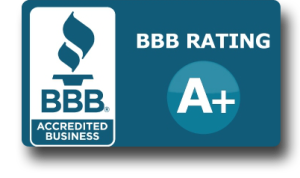Veterans Disability Compensation. Understanding It? Brought to you by the National Care Planning Council and my long standing membership with them.
Veterans are typically in receipt of four cash income disability programs from VA. Two of these programs – Veterans Pension and Survivors Pension – are paid to veterans and their surviving spouses or children for veterans who are non-service-connected disabled. These two programs are often called the aid and attendance benefit when they involve the need for and the payment of an additional allowance because of the need of the aid and attendance of another person. The other two of these programs – Disability Compensation and DIC – are paid to veterans or surviving spouses due to disability or death from service connection.
Veterans health care, which is administered by the Veterans Health Administration, served approximately 9.2 million veterans in 2017. VA healthcare is the largest single payer health provider in the United States. Disability Income – in particular disability compensation – and health care benefits comprised the largest portion of the VA budget which for 2017 was $182.4 billion. Spending for medical care in 2017 was $66.4 billion. Another $79.8 billion was for Disability Compensation benefits including DIC. Another $6.1 billion was for Pension including Survivors (Death) Pension. Part of these Pension payments also included allowances for Pension with aid and attendance. Altogether health and disability expenditures represented a total of about $152.3 billion and encompassed about 83% of the entire VA budget.
| Number of Beneficiaries – 2015 | Younger than 65 | Age 65 and Older | Total all Ages | |||||
| Disability Compensation | 2,697,004 | 1,471,770 | 4,168,774 | |||||
| DIC for Surviving Spouse | 124,738 | 248,391 | 373,129 | |||||
| Veterans Pension | 92,138 | 202,940 | 295,078 | |||||
| Survivors Pension for Spouse | 28,002 | 177,211 | 205,213 | |||||
| 100% Disabled | 479,598 | |||||||
| Special Monthly Compensation | 569,682 | |||||||
| Tinnitus or Hearing Loss – Most Prevalent Disabilities | 2,465,767 | |||||||
| Healthcare System Enrolled | 9,200,000+ | |||||||
| Source: National Care Planning Council and VA statistical data | ||||||||
| 2015 Actual |
2016 Estimate |
2017 Request |
|
| Compensation / DIC Beneficiaries | 4,541,903 | 4,641,415 | 4,833,379 |
| Pensions Beneficiaries | 500,291 | 503,390 | 506,699 |
| Education Program Trainees | 1,019,191 | 1,063,110 | 1,082,328 |
| Vocational Rehabilitation and Employment Beneficiaries | 131,647 | 135,120 | 140,704 |
| New Housing Loans | 614,514 | 541,865 | 429,079 |
| Insured Persons | 6,473,869 | 6,553,040 | 6,479,349 |
| Source: DVA 2017 Budget Proposal |
Disability Compensation
Disability Compensation is a tax-free benefit paid to a veteran for a service-connected disability that happened as a result of injury or disease during active duty, active duty for training, inactive duty for training or injury from VA healthcare. Cash income payments for Compensation range from a low of $136.24 a month to a high of about $8,700 a month in 2018. Special benefits, like grants for new automobiles or modifying existing automobiles, grants for constructing or modifying homes, clothing allowances and so on are payable for severe service-connected disabilities. A veteran cannot receive Pension and Compensation at the same time and a surviving spouse cannot receive Death Pension and DIC at the same time. A choice must be made which benefit the beneficiary wants to receive.
An aid and attendance or housebound benefit in the form of Special Monthly Compensation (SMC) is available to the veteran who is 100% disabled. A single veteran rated for 100% disability will receive a check for $2,973.86 a month in 2018 and if the veteran has a spouse the amount is $3,169.67 a month. A 100% disabled veteran meeting the SMC Schedule (l) aid and attendance criteria can receive $3,700.43 a month in 2018 and if that veteran has a spouse, the amount can be $3,866.24 a month. Higher amounts are possible if the aid and attendance involves certain severe disabilities. An SMC benefit is also available to a veteran who is housebound.
This aid and attendance allowance is not an automatic benefit and most veterans don’t even know about this special assistance and never apply for it. If the veteran receiving Compensation is not 100% disabled, it may be possible to increase the rating up to 100% or be paid at 100% due to unemployability. Even retired veterans can be considered unemployable. Most veterans receiving Compensation don’t have a clue as to their eligibility for aid and attendance or housebound benefits that are not related to the Pension benefit.
Also, an aid and attendance allowance is available due to the need for these services for a disabled spouse of a veteran where the veteran is 30% or more disabled. The amount goes up as the disability rating goes up. For example, for 2018, a 30% disabled veteran can generate an aid and attendance allowance of $46.00 a month benefit as a result of his or her disabled spouse needing aid and attendance. A 100% disabled veteran can generate an aid and attendance allowance of $152.06 a month for his or her spouse. Again, it is not common knowledge these additional aid and attendance allowances are available and VA does not normally notify people of their existence.
Of particular note for Disability Compensation are Agent Orange claims for each and every veteran who was stationed in Vietnam – or other locations this herbicide was stored or used – and who has developed presumptive health conditions such as certain forms of cancer, type II diabetes, ischemic heart disease (lack of proper blood flow to the heart), B cell leukemia and Parkinson’s disease. Veterans with service-connected hearing loss can also make claims and receive free hearing aids and a lifetime supply of free batteries. This hearing disability rating will also get them into the health care system. Many veterans don’t know of the existence of Agent Orange claims or the fact that they might be eligible for service-connected disability for hearing loss.











Leave a Reply